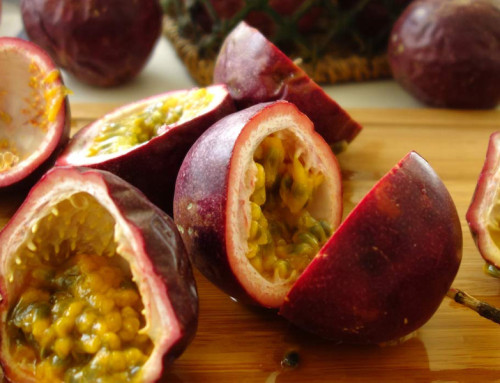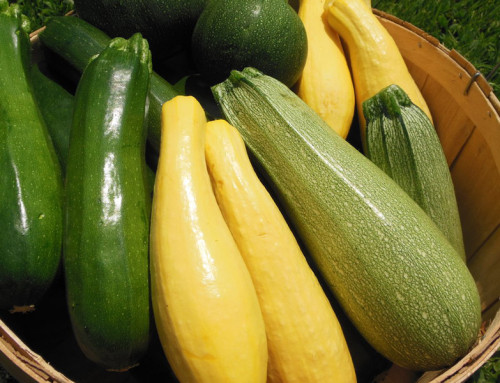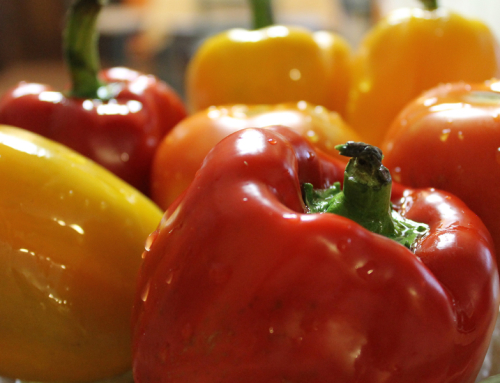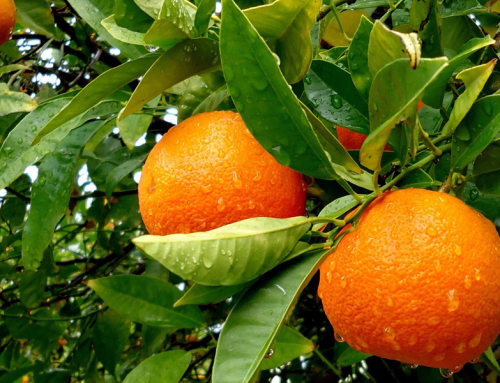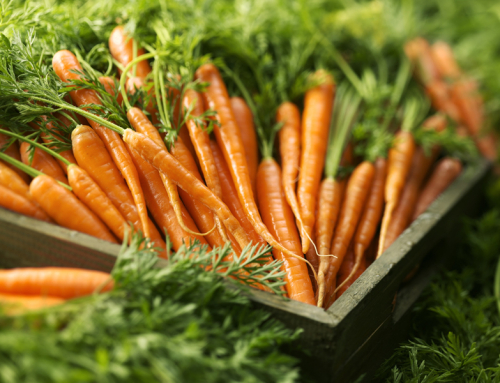- 5 slices 1” in diameter (approx. 11 g) – 9 calories
- Ground, 1 tbsp (approx. 5 g) – 17 calories
- Gingerbread, 1 slice (approx. 74 g) – 263 calories
Ginger has been used in traditional medicine for many centuries, most notably for its gastrointestinal benefits. Believed to have originated in the southern regions of China, the ginger plant belongs to the Zingiberaceae family and the genus Zingiber. The root of the plant, an underground rhizome, is the part of the ginger herb that is used for both its nutritional and medicinal values.
General Information
Commonly used in eastern cuisine, ginger is grown commercially all over the world. The plant itself can grow to about three feet in height, while the finger-like roots grow downward into the earth from the base of the plant. Fresh roots have a beige, almost gray, outer covering. Depending on the variety, the inner flesh may appear cream-colored, yellow, or even red. Ginger root may be cut from the plant as needed or may be harvested all at once as the leaves of the plant begin to lose their color. This spicy root may be crunchy when consumed raw. Older, more mature roots may have a tough, inner fiber.
Ginger’s Nutritional Components
Ginger contains a volatile oil called gingerol, which gives this rhizome its heat and spiciness. Gingerol is found only in fresh ginger, but converts to zingerone when ginger is cooked and shogaol when ginger is dried. Regardless of how it is prepared, gingerol and its analogues have been shown to have numerous health and medicinal benefits. Ginger root also contains many vitamins and minerals, with 100 grams of ground ginger containing significant amounts of B vitamins, iron, magnesium, manganese, and zinc. Fresh ginger has a lesser concentration of these nutrients due to its high water content. The components in ginger have antioxidant, anti-inflammatory, and other positive effects for health.
Health Benefits
- Nausea and Vomiting
This spicy rhizome is most commonly known for its ability to reduce nausea and vomiting due to a variety of circumstances, including indigestion, motion sickness, pregnancy, and certain cancer treatments. Consuming ginger has been shown to be just as effective as some anti-nausea medications without the negative side effects. Because ginger increases the production of saliva, it can help to reduce nausea associated with indigestion. - Other Gastrointestinal Issues
This pungent root is widely known in traditional medicine for helping to eliminate intestinal gas. Smooth muscles in the intestinal tract are relaxed with use, reducing spasms and cramping. When cooked, ginger may be effective in hindering certain bacteria that can cause diarrhea. - Pain and Inflammation
The ability of ginger to reduce inflammation makes it beneficial to those suffering from certain types of arthritis. Swelling in joints is reduced, helping to increase movement and decrease pain. Ginger can also help to reduce the pain of migraine headaches as well as the pain and cramping associated with menstruation. - Cancer
With the antioxidant and anti-inflammatory effects of ginger, this root may offer some protection against cancer. However, more specifically, the gingerols in this spicy root have been shown to be toxic to ovarian cancer cells, requiring more study on the benefits of ginger against certain types of cancer. - Immune System Enhancement
Eating ginger may have benefits to your immune system beyond the general anti-inflammatory and antioxidant benefits. Ginger has a warming effect on the body, which may enhance the way the immune system works. It antimicrobial action has also been show to reduce the severity and duration of colds and other types of infections.
Ways to Use Ginger in Foods
While ginger can be eaten raw, the pungency and heat of this root may not be palatable to everyone. Additionally, older roots contain fibrils that may be touch to chew. There are other ways to enjoy the benefits of ginger in your diet. You should wash and peel ginger before using for best results. When used in cooking, ginger becomes milder and sweeter the longer it is cooked, so add near the end of the cooking time if you wish a stronger, hotter taste. When using dried, powdered ginger, 1/8 teaspoon is an approximate equivalent of 1 tablespoon grated, fresh ginger.
- Beverages: Ginger tea is one of the most common ways that fresh ginger is used to impart its health benefits. Cut a piece of fresh, peeled ginger root and steep in hot water for several minutes. You may also grate the fresh ginger before steeping. You may also add grated fresh ginger to cold beverages, such as lemonade and smoothies.
- Seasonings: Used alone or combined with other spices, ginger adds flavor to main dishes, such as fish or chicken, stir-fry, and side dishes, such as sweet potatoes and other vegetables. This spicy root also works well in salad dressings and soups.
- Baking: The flavor of ginger in baking works well with pumpkin and apple desserts.
Selection and Storage of Ginger
Fresh ginger can be found in the produce section of most grocers all year long. In dried form, ginger can be found in the spice section. You can also buy ginger that has been pickled, crystallized, or candied.
Choose fresh ginger pieces that are plump, firm, and smooth, with no presence of mold. At home, you should store fresh ginger in an airtight bag in the refrigerator for three to four weeks, as long as it is not peeled, or in the freezer for up to six months. Fresh processed ginger should also be stored in an airtight container in the refrigerator or freezer. You can increase the shelf-life of dried ginger by storing it sealed in a cool, dark place.
Ginger Safety Issues
While an allergy to ginger is rare, it may result in a skin rash in sensitive individuals. This root has a high safety profile, but should be avoided in those with a history of gallstones and those who take certain blood-thinning or cardiovascular medications. The most common side effects associated with ginger use is heartburn. This pungent rhizome may also have an affect on clotting, heart beat, and blood pressure, especially in the more
concentrated dried, ground form.



